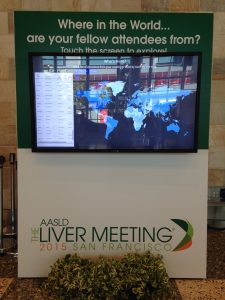The American Association for the Study of Liver Disease (AASLD), the organization that defines how doctors should treat hepatitis B and other liver ailments, unveiled new hepatitis B treatment guidelines this week at its annual conference in San Francisco.
The new guidelines are published here. Patients should review them and discuss any updates that address their individual conditions with their physicians. Continue reading "New Hepatitis B Treatment Guidelines Revealed at AASLD 2015 Conference"




